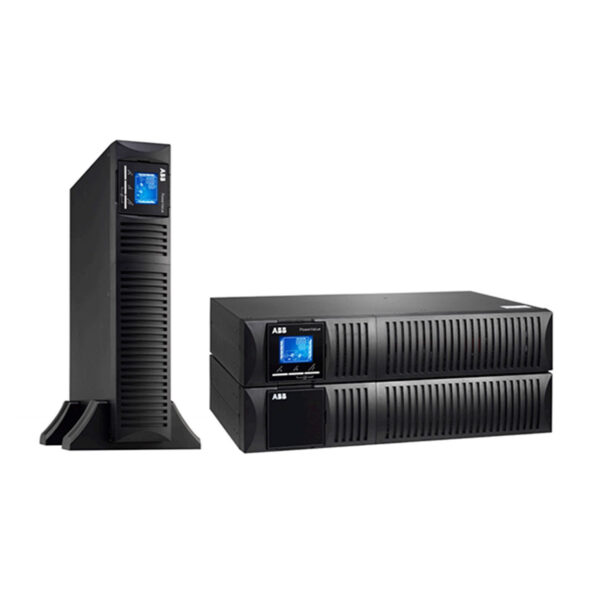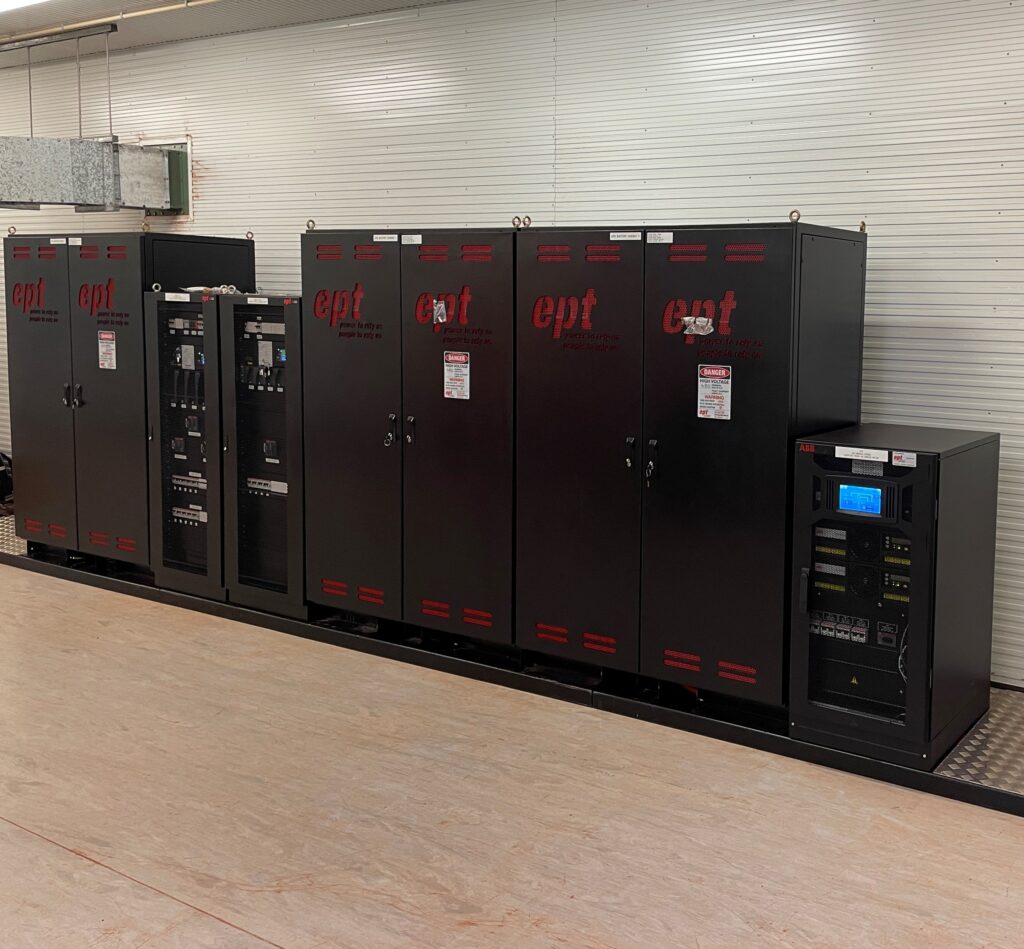Regardless of where your business is based or what industry you are in, all organisations rely heavily on uninterrupted operations to drive success. However, unforeseen events such as sudden power outages or routine maintenance disruptions can quickly change things, potentially leading to data loss, equipment damage, and operational standstills. This is precisely where Uninterruptible Power Supply (UPS) solutions come into play as a crucial solution. In this landscape, EPT, renowned for delivering UPS solutions across Australia, emerges as the partner of choice to ensure uninterrupted power continuity and efficient energy solutions.
The Need for Reliable Power Continuity
An unexpected power loss during a critical transaction or a sudden equipment shutdown due to power fluctuations can severely affect business operations, customer satisfaction, and ultimately, the bottom line.
This is where the significance of Uninterruptible Power Supply (UPS) solutions becomes evident. UPS systems act as a bridge between power interruptions and controlled shutdowns, ensuring that businesses can navigate such disruptions smoothly without incurring damage, data loss, or operational downtime.
Let’s dive into the technical aspects of UPS and understand how it functions to ensure seamless power continuity.
What is a UPS?

At its core, a UPS is an electrical device that bridges the gap between the main power source (typically the electrical grid) and the connected equipment, such as servers, computers, networking devices, and industrial machinery. Its primary function is to provide a stable and regulated power supply to the connected equipment, even when the main power source experiences disruptions.
Components of a UPS System:
A UPS system consists of several key components that work together to provide reliable power backup:
- Battery Bank: The heart of a UPS system is its battery bank. This bank stores electrical energy and is capable of delivering it rapidly when the main power source is interrupted.
- Inverter: The inverter is responsible for converting the DC (direct current) power stored in the battery bank into AC (alternating current) power, which is used by most electrical devices.
- Rectifier/Charger: The rectifier converts the incoming AC power from the main source into DC power, which charges the battery bank. This ensures that the battery remains ready to supply power in case of an outage.
- Transfer Switch: When the main power source fails or experiences fluctuations, the transfer switch instantly detects the change and switches the power source from the grid to the UPS’s battery power.
How a UPS Functions:
- Normal Operation: During normal operation, when the main power source is stable, the UPS functions as a voltage regulator. It ensures that the connected equipment receives clean, stable power, free from voltage sags, surges, or spikes that can damage sensitive electronics.
- Power Interruption: In the event of a power outage, the UPS’s transfer switch activates, and the system switches to battery power within milliseconds. This instantaneous transition ensures that connected devices remain operational without interruption.
- Battery Autonomy: The duration for which a UPS can provide power from its batteries is known as battery autonomy. This duration varies depending on the capacity of the battery bank and the power consumption of the connected equipment. Some UPS systems are designed for short-duration backup (minutes), while others are built for extended backup (hours).
- Graceful Shutdown: For critical systems, a UPS often includes software that communicates with connected devices. When the battery autonomy is running out, the software triggers a graceful shutdown of the connected equipment to prevent data loss and ensure a controlled shutdown sequence.

Types of UPS Systems:
There are several types of UPS systems, each with its own characteristics:
- Offline/Standby UPS: The UPS remains inactive until a power interruption occurs. It then switches to battery power, making it suitable for basic protection against power disruptions.
- Line-Interactive UPS: This type actively regulates voltage fluctuations without switching to battery power, providing greater protection against voltage sags and surges.
- Online/Double Conversion UPS: In this advanced UPS type, the connected devices are constantly powered by the inverter, offering the highest level of power quality and protection.
Benefits of UPS Systems:
- Uninterrupted Operations: UPS systems ensure that critical operations continue seamlessly, preventing downtime and data loss during power disruptions.
- Data Protection: By providing a buffer against power anomalies, UPS systems safeguard sensitive electronic equipment from damage and data corruption.
- System Reliability: UPS systems enhance the overall reliability of electrical systems by delivering clean and stable power, extending the lifespan of connected devices.
- Business Continuity: For businesses, UPS systems play a crucial role in maintaining customer service, preventing financial losses, and preserving reputation.
EPT: Elevating Power Continuity and Energy Solutions Nationwide
EPT’s unwavering commitment to delivering modern, reliable, and sustainable power solutions makes it the go-to partner for businesses of all sizes, across diverse industries. What sets EPT apart is not only its national reach – supplying UPS solutions to businesses Australia-wide.
We aim to take a collaborative approach, working closely with businesses to understand their power requirements, infrastructure, and operational intricacies. This personalised approach ensures that the UPS solution implemented seamlessly integrates with the specific demands of each business.
EPT’s UPS solutions provide the foundation for such resilience, offering businesses an array of benefits:
- Expertise and Customisation : EPT’s team of seasoned experts collaborates with businesses to design UPS solutions tailored to their specific needs.
- Cutting-Edge Technology: EPT’s UPS systems provide real-time insights and remote management capabilities, ensuring businesses have complete control over their power infrastructure.
- Comprehensive Services: EPT offers end-to-end services, from design to maintenance, ensuring that businesses can navigate power disruptions without major interruptions.
- Reliability: EPT’s UPS solutions stand as a testament to reliability, ensuring that critical operations continue unaffected.
- Sustainability Focus: EPT’s commitment to sustainability is evident in its UPS systems, which optimise energy usage and contribute to a greener future.
Conclusion: Navigating Power Disruptions with Confidence
In the dynamic landscape of modern business, where even a moment of downtime can have far-reaching consequences, UPS systems are essential tools for ensuring continuous operations, data integrity, and overall business resilience. Whether it’s a small office, a data centre, or an industrial facility, the technical sophistication of UPS systems is a cornerstone of modern power infrastructure.
For reliable, innovative, and personalised UPS solutions that span across Australia, EPT stands tall as the partner that not only powers your business but also fuels your success in the face of any challenge.
EPT is one of the industry leaders delivering Critical Power and UPS Solutions in Perth, Western Australia, and Across Australia. Contact us today for all your power and energy solution needs.